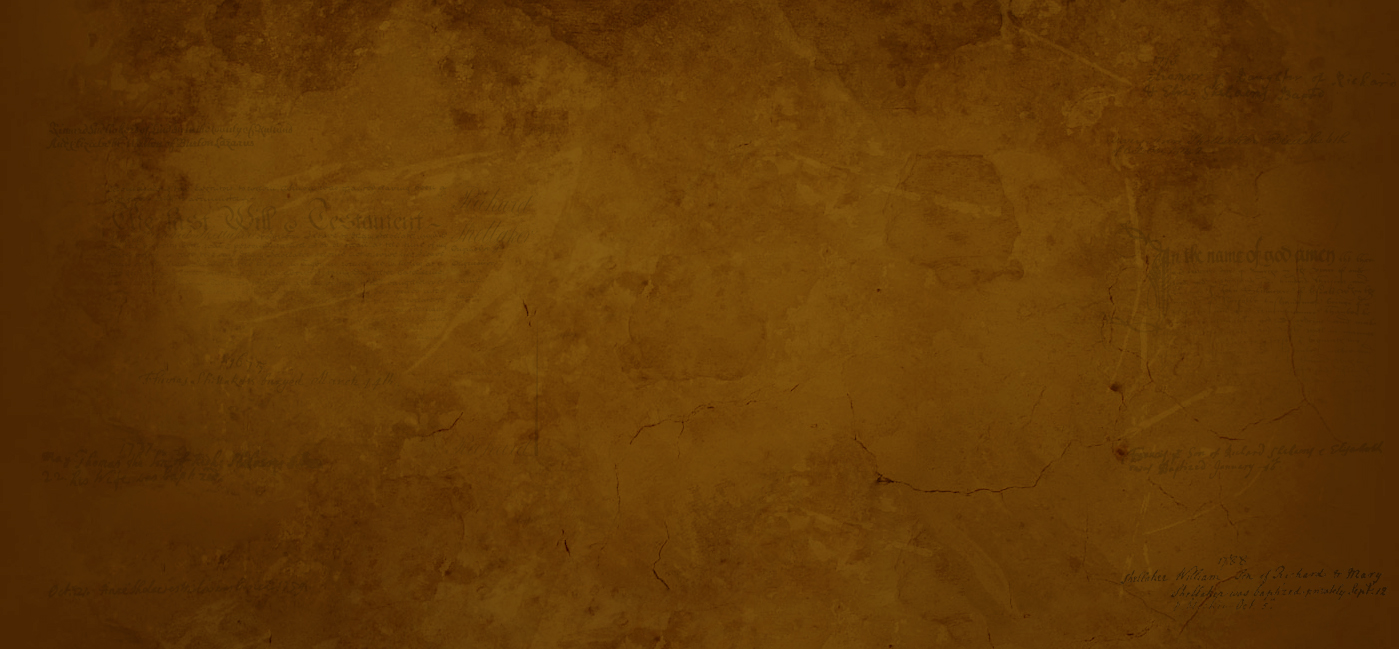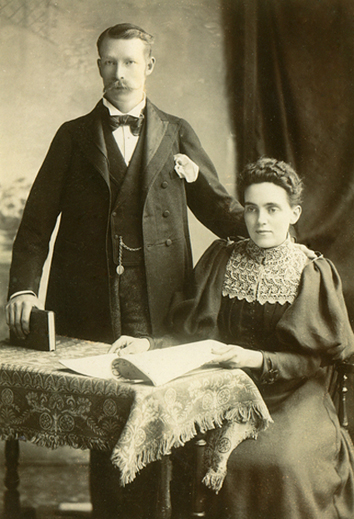

THE BRIDE – What is known of the Polly Shellaker?
 As already mentioned Polly was born on Friday the 26th of August 1864, in TUGBY, a village of around 275 souls in East Leicestershire. Polly spent all of her childhood and adolescence years in this village, attending the local village school, as did her four sisters; SARAH, EMMA, ELIZABETH and HELENA (‘NELLIE’). Polly also had two brothers, WILLIAM and JOHN who, contrary to their sisters, probably did not receiving formal schooling, working instead with their father RICHARD who was one of the local butchers in the village. At around twenty-two years old Polly moved with her parents, Richard and MARY (née GROCOCK), and her siblings, a few short miles to Billesdon Lodge Farm located just over a mile north of the village of BILLESDON.
As already mentioned Polly was born on Friday the 26th of August 1864, in TUGBY, a village of around 275 souls in East Leicestershire. Polly spent all of her childhood and adolescence years in this village, attending the local village school, as did her four sisters; SARAH, EMMA, ELIZABETH and HELENA (‘NELLIE’). Polly also had two brothers, WILLIAM and JOHN who, contrary to their sisters, probably did not receiving formal schooling, working instead with their father RICHARD who was one of the local butchers in the village. At around twenty-two years old Polly moved with her parents, Richard and MARY (née GROCOCK), and her siblings, a few short miles to Billesdon Lodge Farm located just over a mile north of the village of BILLESDON.
Within the Shellaker family was a long tradition of religious non-conformity; Polly’s Grandmother SARAH SHELLAKER was a member of the Wesleyan-Methodist Society and her Grandfather WILLIAM was a leader of the non-conformist Chapel in Tugby. It was believed her father Richard may have played the violin as part of the musical accompaniment to the singing of Hymns. After the move to Billesdon this conviction continued as the family became heavily involved in activities at the Baptist Chapel in Back Street, one of three chapels in that village. During this time Billesdon Lodge Farm, or ‘Shellaker Farm’ as it became known, also was the scene of many Chapel social events. Polly’s sister, Emma was the choir mistress at the Chapel, a position she subsequently held for decades.
As she grew up, Polly, who was acknowledged within the family as being the prettiest of the Shellaker sisters, was seemingly eager to move away from Billesdon. It was said she “got fed-up with getting up at the Lodge at half past four each morning in order to feed the animals”, so sought employment elsewhere and consequently moved to Grantham to work as a Housekeeper.
THE GROOM – What is known of ‘Frank James Brown, Bachelor of Grantham’?
‘Frank James Brown’ cannot be located living in Grantham within the 1891 Census, recorded only a year prior to his wedding to Polly, nor strangely as living anywhere else in the country. Curiously neither can his name be found on the Census Returns for 1881 or 1871.
Nor can this name be discovered in Army or Navy Records or amongst the registers of those incarcerated in Jail or travelling overseas. Inexplicably his name is even missing as an infant on the Census of 1861. No record of his birth can be found nor any record of a Baptism of a child with that name around the year 1860.
A SECOND WEDDING
The single definitive clue which unlocked the mystery of Frank James Brown’s ancestry is an official document recorded over four decades after the marriage in Grantham in 1892. This document was a Wedding Certificate dated 27th February 1934 at Kingston upon Thames in the Counties of Surrey and Middlesex. The couple getting married on that Tuesday is recorded as being ….
MARY JANE SHELLAKER (POLLY) aged 69 years, a Spinster residing in Surbiton, daughter of Richard Shellaker (deceased), Farmer and FRANK BROWN aged 73 years, a Widower also residing in Surbiton, son of HENRY ISAAC CABLE (deceased), Builder.
Certificate of Marriage 27th February 1934 – Francis James Brown & Mary Jane Shellaker (Polly)
The groom signs his name ‘Francis Brown’ although in the section on the certificate for ‘Name and Surname’ he writes ‘Francis Cable otherwise Brown’ It is clearly evident, from the information on this document, Polly and Frank went through a second wedding ceremony. This is cermony is not a Blessing or a repeating of vows but a bona fide second wedding ceremony, over 41 years after their first in Grantham in 1892. Furthermore, the notation of ‘widower’ as Frank’s status as recorded on this document is unambiguous evidence he had been previously married to someone who had since died.
It was also evident, that back in 1892, the man walking down the aisle at Finkin Street Methodist Chapel to marry Polly Shellaker was not ‘Frank James Brown, Bachelor of Grantham’, but was, in reality, FRANCIS JAMES CABLE.
So when Frank made his vows to commit to stay with Polly… “for better for worse, for richer for poorer, in sickness and in health, to love and to cherish, till death us do part”, Frank was also committing a crime….. the crime of BIGAMY.
The Story of Francis James Cable and his family is one which warrants a separate narrative – click on this link to read his story – FRANCIS JAMES CABLE
BIGAMY IN VICTORIAN ENGLAND
Bigamy was, and still is, a crime under ‘The Offences against the Person Act 1861.’
“This offense will be committed by one who being married, shall marry any person during the life of the former husband or wife, whether the second marriage shall have taken place in England or Ireland or elsewhere. The effect of Section 57 of the above Act is that whoever, being married, goes through a ceremony of marriage with any other person during the life of his or her spouse is guilty of bigamy”.
Evidence to convict relies upon;
i. Production of the first marriage certificate and calling some who were present at the first ceremony to identify the parties.
ii. To prove that the first spouse is still alive at the time of the first marriage and that there has been no annulment of the marriage or a divorce.
A mistaken belief that the bigamist believes the first wife was deceased is not a defense. Bigamy is sometimes committed for the purpose of obtaining property or is the purposes of seduction, in which case the punishment may be severe. The offence of Bigamy carried maximum of seven years imprisonment. However some people consider that the offense should not be heavily punishable, or even punishable at all, when considered in this light, in practice sentences are often very lenient.
The Act also states that; “A bigamous ceremony does not create a marriage”. Therefore Polly was not legally married at Grantham on the 10th of October 1892 and subsequently all her children were all born out of wedlock and were illegitimate. In reality, and legally, she actually remained “Polly Shellaker” until the 27th February 1934.
Next Page: Belton House – A Myth Exposed